Art & Culture
Vietnam’s Dong Ho paintings may be slowly fading away
Vietnam’s exceptionally refined Dong Ho paintings might just be coming to an end
Vietnam’s exceptionally refined Dong Ho paintings might just be coming to an end
Published
6 years agoon
By
Anna ChuWith their bold, brash colors that shimmer on glossy seashell paper, Dong Ho paintings (sometimes known as Tet paintings) are an unmistakable Vietnamese art form, by turns both satirical and a symbol of good times ahead. Sadly, it is a storied style that may be dying out, so Chào set out to seek the village where they are made in what is a lengthy, arduos process.
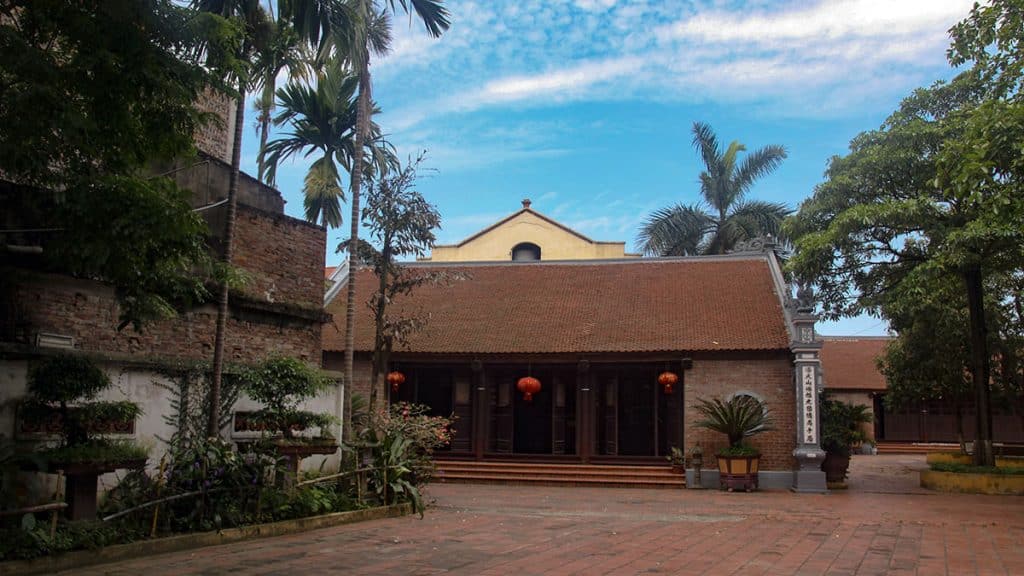
Walking through the small and seemingly quiet alleys in Song Ho village of Thuan Thanh District in Bac Ninh Province, Chào wandered in search of the region’s renowned Dong Ho paintings, an eye-catching traditional Vietnamese fine art. To our surprise, all we could find were villagers busily stacking up joss and votive paper into small trucks to be sent far away. Eventually, we found a gigantic stone sign saying “Dong Ho village,” but where were the paintings? After asking many families, we were told there were only two households left keeping the craft alive.
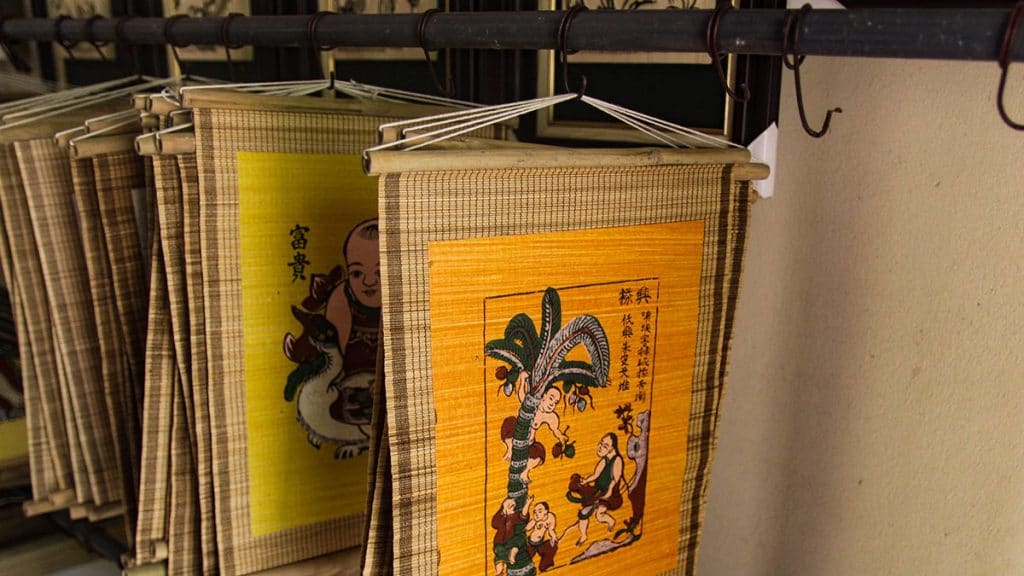
Eventually, we were pointed to the workshop of famous Vietnamese Dong Ho artist Nguyen Dang Che—he’s now almost 90 years old and has been painting in this eye-catching style for about 70 years. It is fair to say that he has become rather good at it. Greeting us on the way in, Che was standing on a tall chair, energetically pruning away at his favorite jack fruit tree, grinning and full of energy.
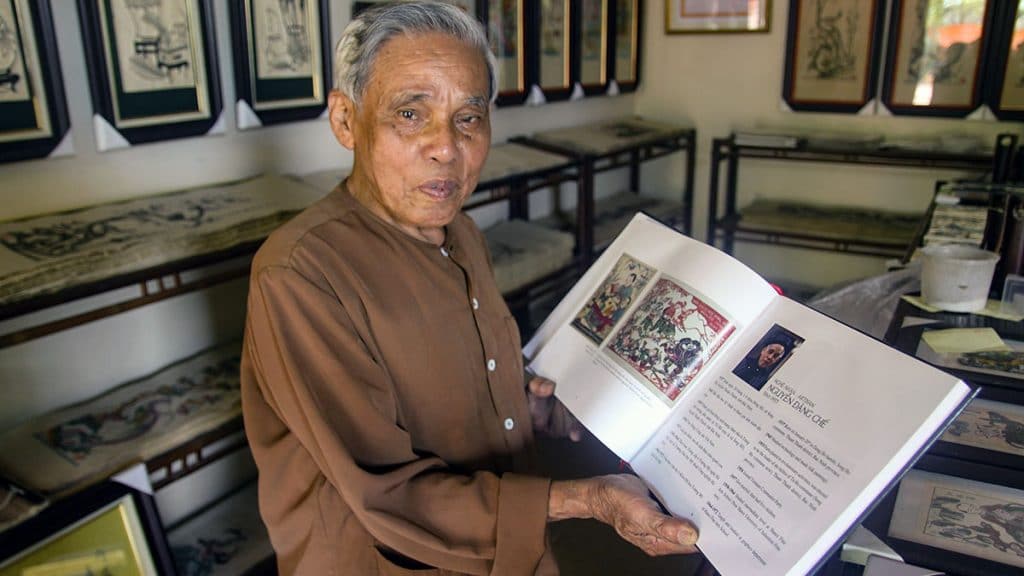
Che and his son run the folklore exchange center in the village where they organize training courses and events for people to experience and understand the complex process of making a Dong Ho painting. The center is the largest creator of such paintings in Vietnam. Another household nearby carries out similar work, though on a much reduced scale.
“An old poem says that seashells are the very essence of Dong Ho paintings.”
As is the case for so many folk-crafts, nobody is quite sure when the style originated; some say it dates back to the 11th century under the Ly Dynasty, while others propose that it started during the Le Dynasty in the 17th century. Either way, it has been around a long time, though it is sadly not as popular as it once was. These pictures were once called “Tet paintings” as they were often hung during the Lunar New Year. The colorful tones and optimistic messages of the paintings played a key role in livening up people’s homes at this auspicious time of year, as a lucky symbol for families over the Tet holiday. However, they have largely fallen out of favor among the locals, and today are more like to be purchased by tourists, many of them fake, mass-produced copies.
The process of creating a Dong Ho painting is incomparable to most modern art of today. “An old poem says that seashells are the very essence of Dong Ho paintings” says Phung, Che’s son. “The national colors shine brightly on seashell paper, without them Dong Ho paintings would not be the same.”
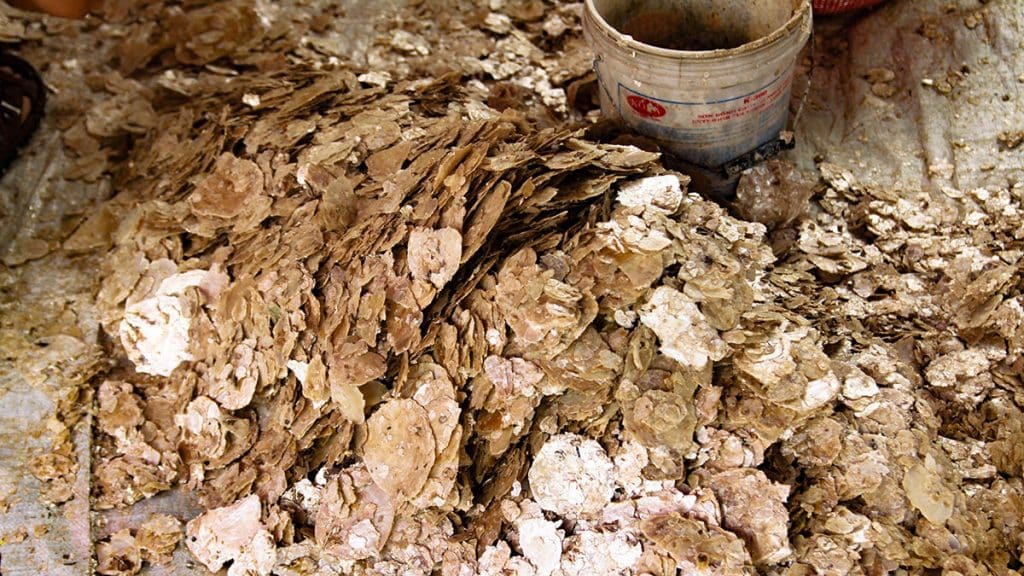
The method has always been an unusual one. Artists would purchase seashells from fisherman, which would then be buried to rot underground. Years later they are dug up, rinsed with water smashed into pieces and mixed together with glue, shaped into dough and incubated for several months. As soon as the mix is ready to go, they are used as a base layer on special paper made from the bark of the do tree. If you unroll a piece of the seashell paper under the sun, you can see it shimmering in the light—the paintings layered with color after color. They are not painted by hand ither, bur rather printed from equisitely carved wooden blocks.
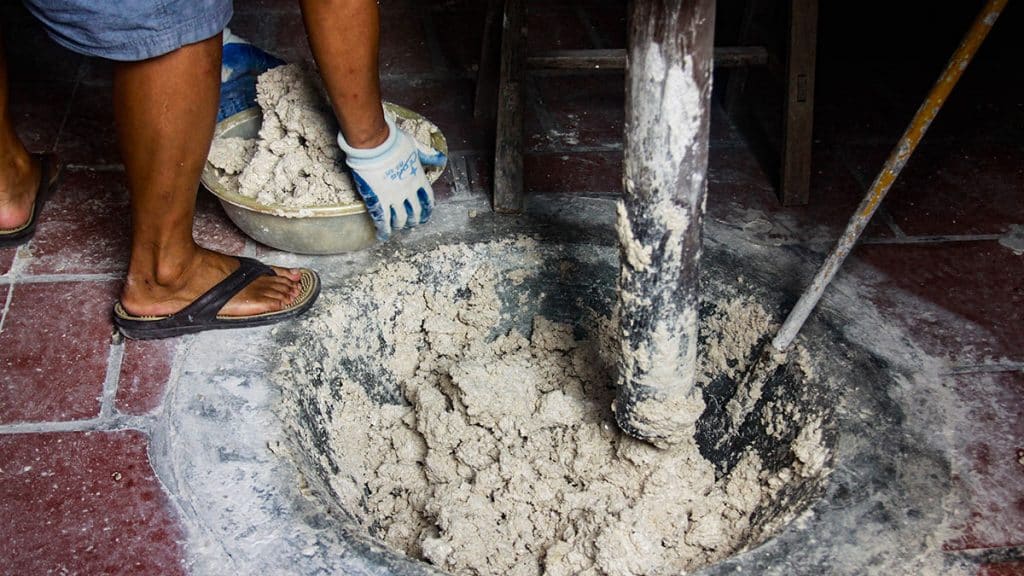
“Growing up learning the craft since I was a child, there was something floating in my blood already and I knew that I needed to continue this tradition.”
Inside Che’s exhibition room, Chào also saw dozens of meticulously carved wood panels dating back hundreds of years. Each of these panels were used for different colors refined from natural ingredients: black from burnt bamboo leaves; green from cajuput leaves; yellow from senna flowers, blue from verdigris; red from powdered rock; and finally white from crushed egg shells. Normally, colors will be layered with red and green first, with the black strokes added last. “For each layer, we have to wait for a day for the color to dry completely, some colorful paintings take several more days to finish,” Phung says.
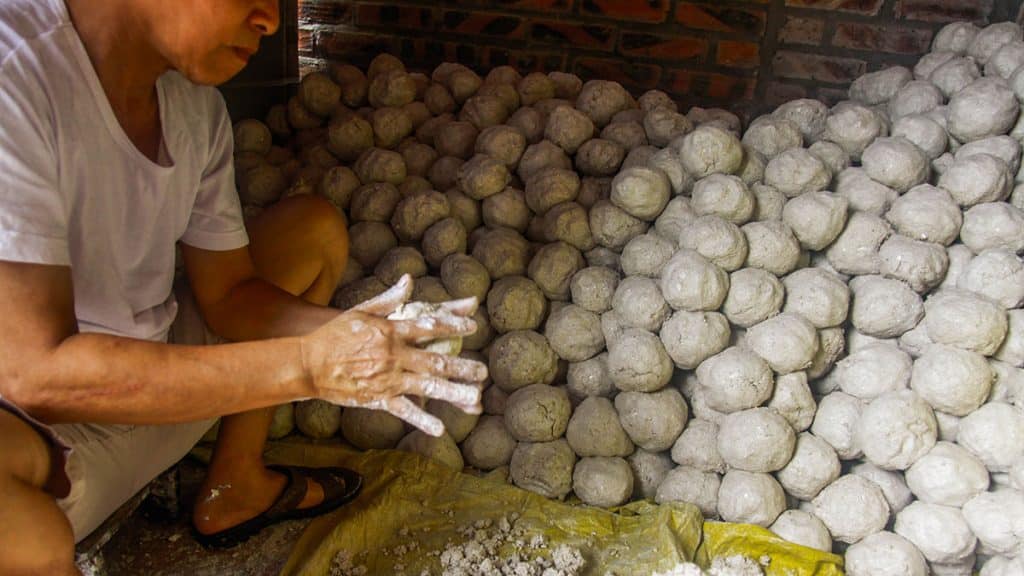
Similar to many folk songs, dances or poems, Dong Ho painting is an art form born of the people. While most of the images carry congratulatory messages such as such as the “Chicken Family” painting made to see in the Year of the Rooster, some are humorous or more scathing and satirical, criticizing wider society or even denouncing the shocking habits and manners of the ruling classes. A classic example is the illustration “A Rat’s Wedding.” This iconic Dong Ho painting mocks the ceremonial and complicated rites of the elites of the time. The picture, which shows a an overweight cat motionlessly waiting for food offered by the rats, clearly represents corruption. Once the fat cat is fed, the rat can happily marry without any disruption or fear of attack from his feline enemy.

“Growing up learning the craft since I was a child, there was something floating in my blood already and I knew that I needed to continue this tradition,” Che told Chào. Guiding us through the center, he shows us a copy of a book named “Dong Ho Folk Paintings Through a Famous Artisan,” a book focusing on him. Proudly flipping through its pages, he opens up about the situation today, seemingly slightly sad. “In the past our main customers were foreigners, however, in the past 10 years they have come less and we are struggling to change our target customers to the Vietnamese market,” he says. “People will buy them as decoration for their hotels, or Airbnbs. It is ok since only two households are doing this. If everyone in the village was doing it, I don’t think we would have a chance to survive.”
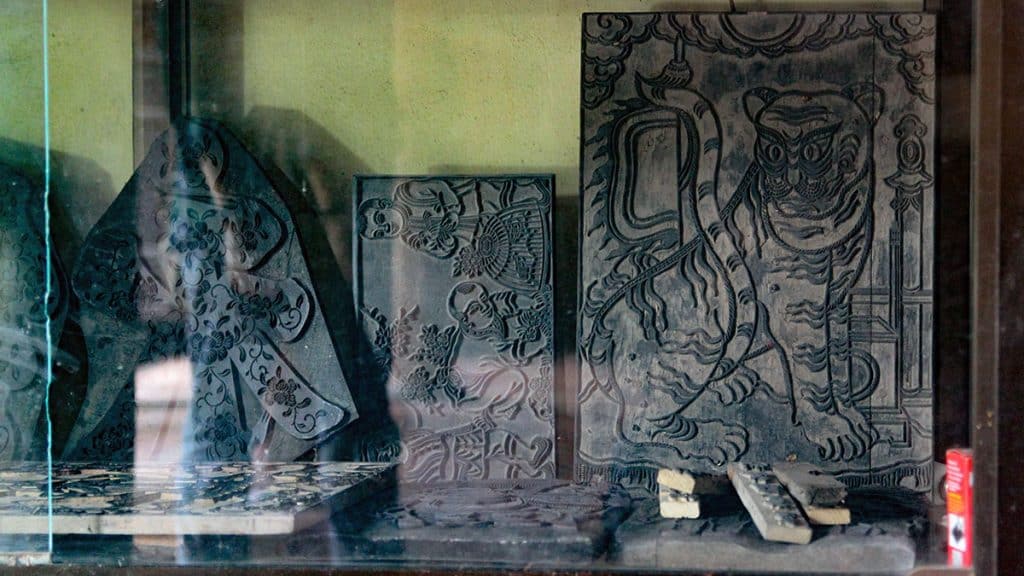
Indeed, most in the village have long since switched to producing joss paper. Sadly, if a way is not found to balance the financial aspect of this outstanding traditional art then it may one day become a mere part of Vietnam’s history. Do seek out an original while you can.
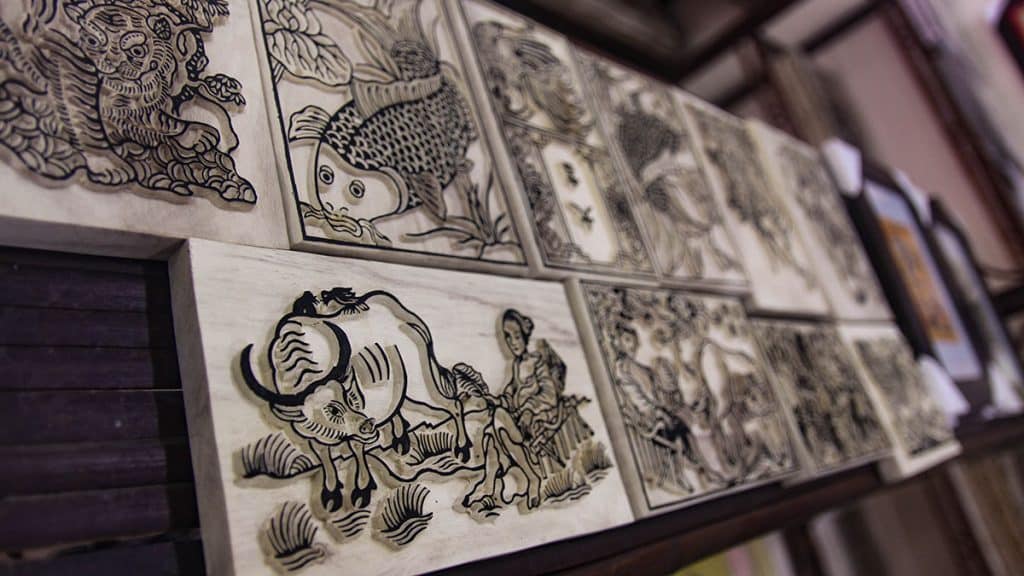
All photos by Anna Chu.
In Hanoi you can buy Dong Ho paintings from:
Ban Tranh Dong Ho
So 19, Ngo 179 Hoang Hoa Tham, Ba Dinh
Tel: 097 572 4238
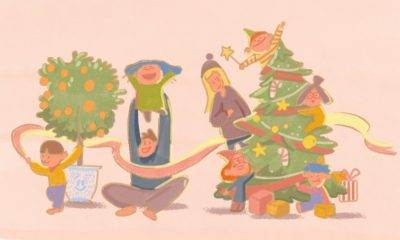

[Column] The love is the thing
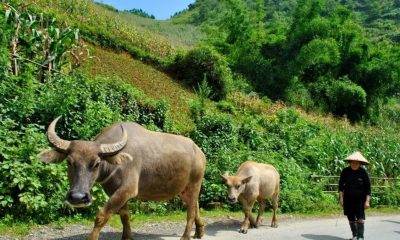

Where the buffalo roam: 5 things you might not know about the bovine beasts
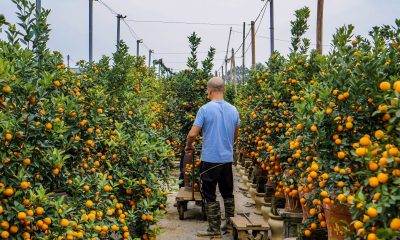

[Photo series] The flora of Tet: from kumquat trees to peach blossom


A taste of Hanoi’s Tet dinner table
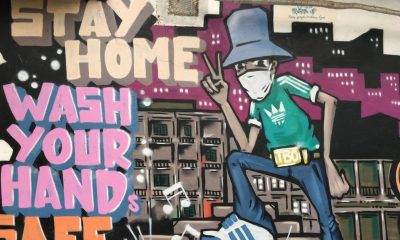

[Op-ed] Why you should cancel your Tet holiday and stay home
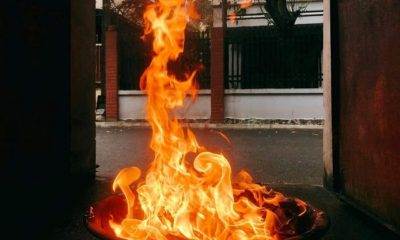

Hanoi lights a fire


Vietnam trade union federation calls for workers to restrict Tet travel